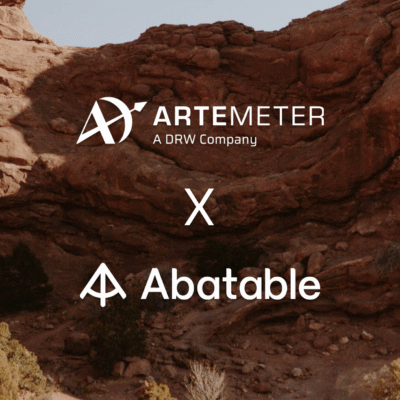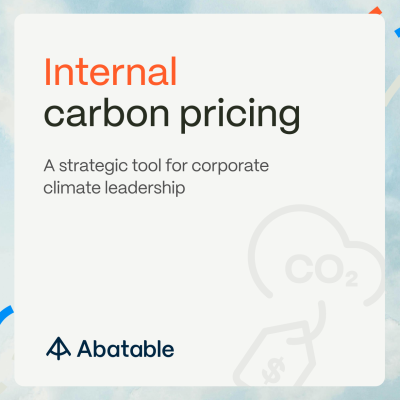We break down the Voluntary Carbon Markets Initiative’s Claims Code of Practice and give our perspective.
Companies acting on climate change are currently caught in a crossfire between some industry observers that demand perfection overnight and others that attack the very idea of net-zero and ESG strategies.
So said former UNFCCC Executive Secretary Christiana Figueres at the launch of the Voluntary Carbon Markets Initiative’s (VCMI’s) newly published Claims Code of Practice, arguing that these two camps are equally responsible for the growing trend of “greenhushing” across climate-conscious businesses.
Good timing then for the publication of the Claims Code, available here, which is designed as a rulebook for companies to support climate action beyond their value chains using carbon credits. This is hoped to increase integrity on the demand side of the VCM and give businesses the confidence to shout about their climate efforts.
This is welcome in a landscape where companies are moving away from claims built on offsetting principles, following bodies like the European Union and the UK Advertising Standards Agency becoming stricter about proclamations of carbon neutrality.
At Abatable we believe the code is positive for the VCM, especially because VCMI’s Foundational Criteria require companies seeking to make a claim to disclose their annual greenhouse gas inventory and set and publicly disclose validated science-based targets. This will help tackle both greenwashing and greenhushing.
We do caution that a “tonne-for-tonne” approach is not the only way for a company to support climate action. We also think that the Integrity Council for the Voluntary Carbon Market’s (ICVCM’s) Core Carbon Principles (CCP) – which VCMI is backing in order to get the claims code stamp of approval – should not be viewed as the sole arbiter of quality in the market.
What’s new?
The new Claims Code is an update from a provisional document released last year. The final version is relatively similar to the provisional guidance, which we analysed at the time.
Three tiers of claim ambition remain but, presumably to avoid firms feeling like they were settling for third place, the category names have changed from “bronze”, “silver” and “gold” to “silver”, “gold” and “platinum”. There are also some slight differences in what each tier represents compared to what was previously outlined.
Each tier represents a different level of engagement with the VCM:
- Silver – a company buys and retires high-quality carbon credits equivalent to 20-60% of remaining emissions in the VCMI claim year following value chain action.
- Gold – a company buys and retires high-quality carbon credits equivalent to 60-100% of remaining emissions following value chain action.
- Platinum – a company buys and retires high-quality carbon credits equivalent to 100% or more of remaining emissions following value chain action.
This is visualised below.
Before they can make a claim, companies also need to meet a number of “Foundational Criteria”. These include disclosing greenhouse gas emissions across all scopes and having a short- and long-term science-based emissions target in line with the recommendations of the Science Based Targets initiative. They also need to commit to reaching net zero by 2050.
The code requires the use of credits of the “highest quality”. As expected, VCMI defines these as meeting quality thresholds for the ICVCM’s CCP label. If the credit type has not yet been assessed by ICVCM, firms are advised to purchase and retire CORSIA-eligible credits.
Claims also need to be assessed by a third party, such as the International Organization of Securities Commissions (IOSCO). Additional guidance on this will follow in November this year as part of the VCMI’s Measurement, Reporting and Assurance framework. Further claim tiers and claim names will accompany this.
Our take
The Claims Code is very welcome and is a positive step forward. A robust code of practice will allow companies to shout about their climate action with confidence, and the market will hopefully become more transparent due to this level playing field.
We particularly welcome the Foundational Criteria, which we believe align very well with the EU’s and the UK’s new guidelines on green claims.
However, we believe the guidance is tonne-for-tonne centric and gives little room for companies that are taking a more innovative approach to supporting climate projects such as “dollar-for-tonne” support. This may be required for more innovative and expensive solutions such as carbon dioxide removal.
On top of this, while the CCPs will provide a strong foundation for identifying high-quality project types, quality is not totally covered under the CCP framework. High-quality projects outside of the assessed project types will not be captured by the CCP label. Therefore, it is still important that companies also carry out their own due diligence on the quality of the credits they are purchasing.
Despite these concerns, we hope and trust the new guidance will spur firms to once again share their climate action activities with confidence, which is sorely needed.















































































































